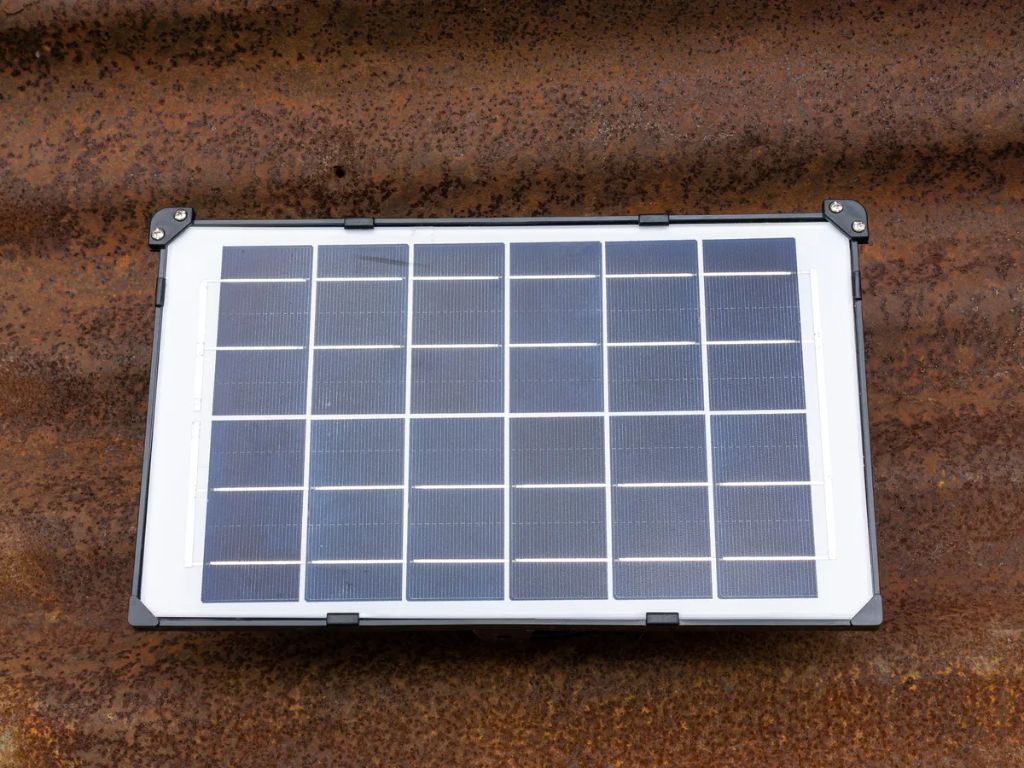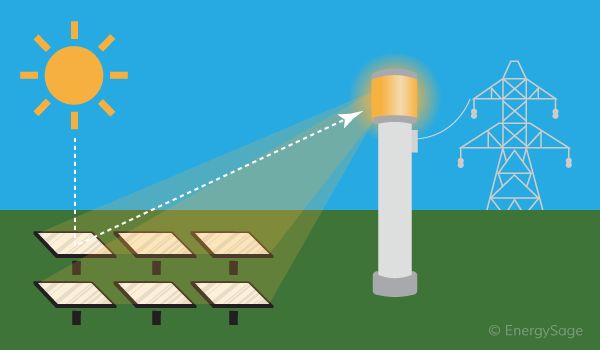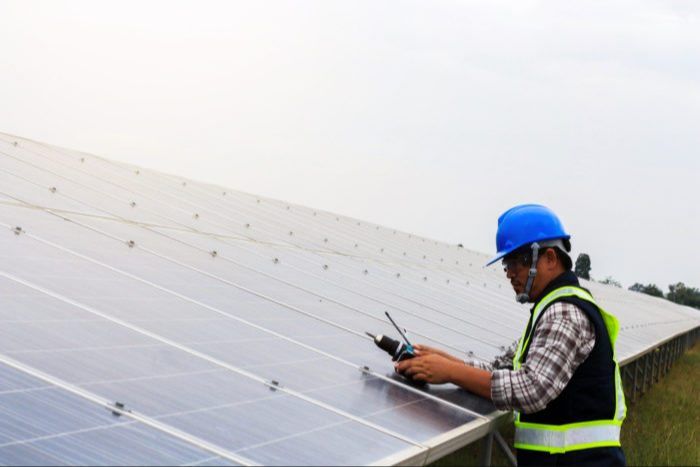What Can I Make With Solar Energy?

Solar energy is the radiant energy emitted by the sun, which can be harnessed by technologies like solar panels to generate electricity. The sunlight that reaches the Earth’s surface provides enough energy in one hour to supply our planet’s energy needs for an entire year (Solar Energy Statistics: 44 Numbers That Define U.S. Solar. (2019, April 14). Solstice. https://solstice.us/solstice-blog/solar-energy-statistics/). Solar power offers a clean, renewable way to generate electricity with zero emissions. As solar technology continues to improve in efficiency and decline in cost, it is becoming an increasingly attractive solution to meet our energy needs while reducing dependence on fossil fuels.
Solar Panels
Solar panels are made up of photovoltaic (PV) cells that convert sunlight into electricity. When sunlight hits the solar panel, photons from the sunlight are absorbed by the PV cells, which are made of semiconducting materials like silicon. This knocks electrons loose, allowing them to flow freely. The PV cells have an electric field that forces the electrons to flow in a certain direction, creating a Direct Current (DC). An inverter then converts this DC to Alternating Current (AC), which is what powers homes and the electric grid.[1]
Solar panels are composed of many PV cells wired together. The more sunlight that hits the solar panels, the more electricity that is produced. Solar panels are mounted on rooftops, ground mounts, or poles to maximize sunlight exposure throughout the day. They are most efficient when pointed directly at the sun. While solar panels produce some electricity on cloudy days, they produce the most energy on sunny days. Today’s solar panels average around 15-20% efficiency at converting sunlight to electricity.[2]
Solar Powered Electronics
Using solar energy to charge batteries and power small electronics like phones, laptops and wearables is a growing trend. Portable solar panels can be used to charge these devices when access to wall outlets is limited, such as when camping, hiking or traveling.
Flexible solar panels made of thin plastics allow lightweight integration into bags, tents and clothing to keep electronics powered on the go. Researchers are developing ultra-flexible solar cells using novel nanomaterials that can integrate directly into fabrics for wearable tech (Güler et al.).
Solar-charged batteries and power banks also provide off-grid electricity for phones and laptops when traveling in remote areas. Portable solar generators like the Daranener (Daranener) can store solar energy in batteries to supply anywhere between 150-800w of power.
The market for solar-powered consumer electronics is forecast to grow as solar enables mobility and convenience (Straits Research). Advancements in plastics and solar cell efficiency will allow integration into more devices.
Solar Water Heaters
Solar water heaters use solar thermal energy to heat water for domestic or commercial use. They are a great way to utilize the sun’s energy to reduce electricity or gas consumption required for water heating. According to Statista, global solar water heating capacity reached 542 gigawatts thermal in 2022.
Solar water heaters work by absorbing heat from the sun and transferring it to water. There are two main types – active systems that circulate water or heat transfer fluid through collectors and passive systems that don’t require circulation. The heated water is then stored in an insulated tank ready for use.
Solar water heating systems can be used for residential homes to provide hot water for bathing, laundry, dishwashing etc. They work well in warm, sunny climates. Active systems with freeze protection can also be used in colder regions. Solar pool heating uses unglazed collectors to heat swimming pool water and can extend the pool season.
The U.S. Department of Energy estimates that solar water heaters can provide up to 80% of residential hot water needs and are a cost-effective, environmentally-friendly way to harness the sun’s energy for water heating needs.
Solar Cookers
Solar cookers and ovens harness the sun’s energy to cook food without the need for electricity or fuel. They work by using mirrors and reflective surfaces to concentrate sunlight onto a cooking vessel. The intense sunlight quickly heats up the vessel to temperatures hot enough to boil water and cook food.
There are several common designs for solar cookers and ovens:
Box Cookers: These are the simplest and most affordable solar cooker design. They consist of an insulated box with a transparent lid made of glass or plastic. The inside of the box is painted black to absorb heat. Food is placed inside the box, where it cooks from the trapped sunlight.
Panel Cookers: These cookers use reflective panels to direct sunlight onto a cooking pot. The pot sits inside an insulated box to retain heat. Panel cookers can reach higher temperatures faster than box cookers.
Parabolic Cookers: These use a parabolic dish to concentrate sunlight into a focal point. A cooking pot sits at the focal point and can reach very high temperatures quickly. Parabolic cookers work best for frying and pressure cooking.
Evacuated Tube Cookers: These ovens contain parallel rows of evacuated glass tubes. Each tube works like a small solar hot plate, absorbing and retaining heat. Evacuated tube ovens heat up faster and achieve higher temperatures than other solar cooker designs.
Solar cookers are a sustainable way to cook food without electricity or firewood. They are an excellent option for camping trips or everyday use in sunny climates. With some creativity, almost any recipe can be adapted for solar cooking.
Solar Vehicles
Solar vehicles use solar panels to convert sunlight into electricity to power electric motors. Prototypes of solar-powered cars, planes, and boats have been built and tested around the world.
Some examples of solar vehicle prototypes include:
- The Solar Impulse 2, a solar-powered plane that completed the first round-the-world solar flight in 2015-2016 (Solar vehicle).
- The Lightyear One, an upcoming solar-assisted electric car expected to launch in 2021 (Top Solar-Powered Vehicles in the World).
- The PlanetSolar, the largest solar-powered boat to circumnavigate the globe (Solar car).
These solar vehicle prototypes demonstrate the potential of solar power for transportation, though most are still in early development stages. Key advantages of solar vehicles include reduced reliance on fossil fuels and extended driving range from solar energy. However, high costs and low power output remain challenges to widespread adoption currently.
Solar Desalination
Solar desalination uses solar energy to evaporate and purify water. This process removes salt and other minerals from saline water to produce fresh, drinkable water. There are several ways solar energy can power desalination:
Direct solar desalination uses solar thermal energy to directly heat saline water enough to evaporate the freshwater vapor, which is then condensed and collected. This type of solar still is one of the simplest and lowest cost methods. Researchers have developed inexpensive solar stills made of low-cost materials like wood and plastic sheeting.
Concentrated solar power (CSP) uses mirrors to concentrate sunlight to generate high temperatures. The heated fluid from CSP can provide thermal energy to drive more efficient desalination processes like multi-stage flash distillation or multi-effect desalination. CSP has been used for large-scale solar desalination plants, like in Saudi Arabia.
Solar photovoltaic panels can also provide electricity to power desalination systems like reverse osmosis. Combining PV and desalination helps provide both fresh water and renewable energy. Solar PV-powered desalination has been implemented for remote off-grid communities.
Solar desalination is attractive as an environmentally sustainable method to produce fresh water in areas with brackish or sea water. It can help address freshwater scarcity in arid regions with high solar irradiation. However, large-scale solar desalination still faces challenges around economic feasibility.
Solar Architecture
Solar architecture makes use of passive solar design to utilize the sun’s energy for heating and lighting buildings. Some examples of passive solar building design include:
The Zion National Park Visitor Center in Utah uses passive solar design with large south-facing windows, overhangs, and thick concrete walls for thermal mass. The building stays cool in summer and warm in winter with minimal need for heating or cooling (Source).
The Jacobs House in Wisconsin has a greenhouse on the south side that collects heat from the sun in winter. The heat is absorbed into the masonry floors and walls, providing warmth for the home (Source).
The morphology building at the Solar Settlement in Freiburg, Germany optimizes solar gain with 46% glass facade area on the southwest side. Solar collectors provide 60% of the building’s total energy needs (Source).
Home Solar Projects
There are many fun and easy DIY solar projects you can do at home to start harnessing the power of the sun. Here are some ideas:
Make solar-powered sun jars using mason jars, solar lights, and decorative items. These make great outdoor lighting and garden decor.
Build a portable phone charger using a small solar panel, power bank, and USB cable. Keep your devices charged on the go.
Create solar garden pathway lights by pairing small solar cells with LED lights and jars. Light up your garden or walkway at night.
Make a solar phone speaker using a Bluetooth speaker, solar panel, and battery. Listen to music anywhere without electrical access.
There are endless possibilities for easy and fun solar DIY projects. Get creative and start harnessing the power of the sun!
Conclusion
Solar energy has a wide variety of uses, from powering small electronics to providing electricity for entire buildings and towns. This article explored some of the many ways solar energy can be harnessed, including solar panels, solar water heaters, solar cookers, solar vehicles, solar desalination, solar architecture, and home solar projects. The benefits of solar are numerous – it is a renewable, sustainable, and clean form of energy that helps combat climate change. Solar technology is also rapidly improving and becoming more affordable. With so many uses and advantages, solar has immense potential to play a major role in our energy future.





